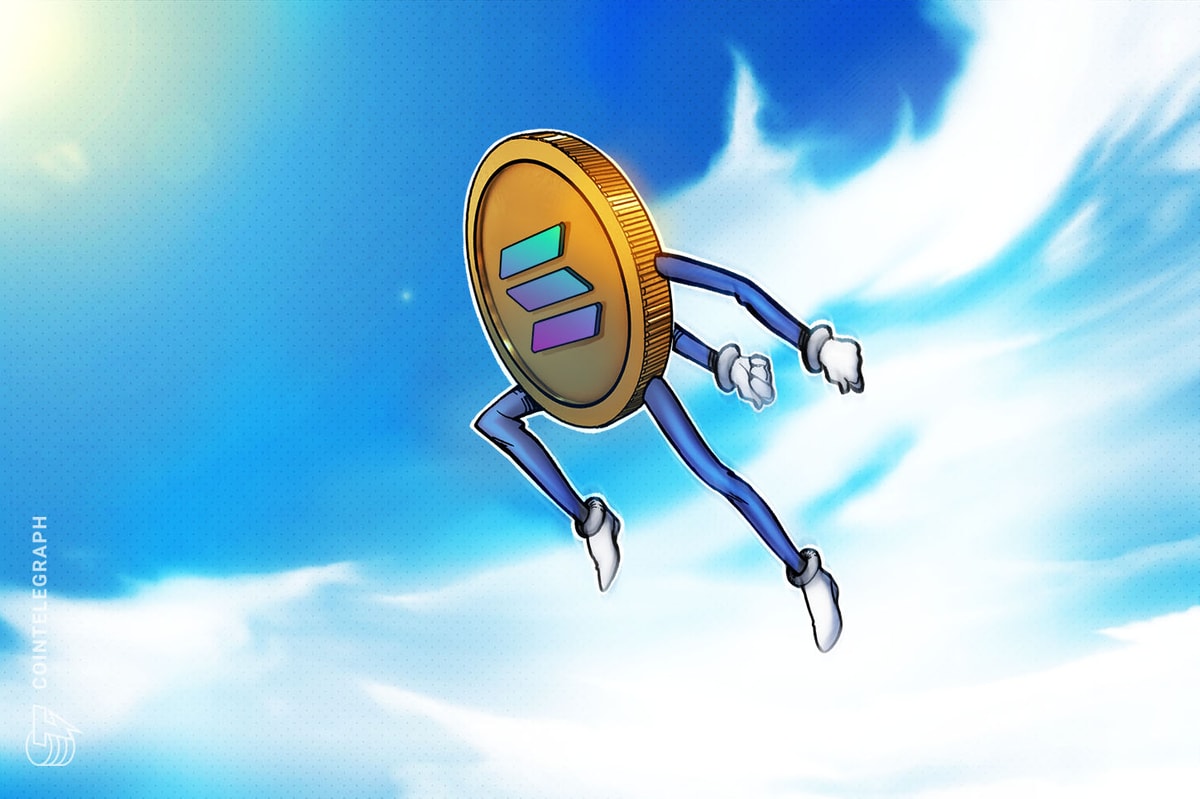Solana (SOL) trades above $180 again after struggling to recapture the level for nearly 3 months. The month-long, 16.3% gain to $183 comes alongside Bitcoin (BTC) rallying within $1,000 of its all-time high, but does Solana-specific data support a move to higher levels?
Total altcoin capitalization (left) vs. SOL/USD (right). Source: Tradingview
Onchain and derivatives metrics indicate that Solana’s bull run may be just beginning, with the potential for further gains toward $200 and higher. Data shows a steady rise in the Solana network’s total value locked (TVL) as the amount secured in its smart contracts hit a 2-year high.
Solana network total value locked, SOL. Source: DefiLlama
On Oct. 26, deposits on the Solana network reached 42.5 million SOL, the highest since September 2022. Key contributors include Jupiter, which saw a 13% increase in deposits over the last 30 days, Raydium, with an 18% increase, and Sanctum, with a 17% inflow during the same period.
Solana ranks second in decentralized applications
Solana has now surpassed BNB Chain to become the second-largest network in terms of liquid TVL, although it still trails behind Ethereum. The gap has been narrowing in recent years. A recent example of Solana’s growth is the launch of Binance’s SOL liquid staking service, which currently ranks tenth in the Solana ecosystem, suggesting more potential for growth.
In comparison, Ethereum’s TVL increased by 2% over the past 30 days, while BNB Chain declined by 5%. It’s important to note that looking solely at deposit figures can be misleading, as many decentralized applications (DApps)—including games, collectibles, Web3 infrastructure, social networks, and marketplaces—do not require large deposit bases.
Blockchains ranked by 7-day DEX volumes, USD. Source: DefiLlama
Solana has recently surpassed Ethereum to lead in decentralized exchange (DEX) volumes, maintaining this position with a 19% increase over the past seven days. In contrast, Ethereum’s activity surged by 6%, while BNB Chain declined by 3%. Overall, Ethereum’s layer-2 ecosystem volumes rose by 5% during the same period, making Solana the clear winner.
Notable contributors within the Solana ecosystem include Raydium, which gained 20%; Lifinity, with a 49% increase in volumes; and Phoenix, adding 34% activity in just seven days. A significant portion of Solana’s increased flows can be attributed to the memecoin sector, raising questions about the sustainability of this growth.
For instance, Moo Deng (MOODENG) surged by 178% over the past week, Goatseus Maximus (GOAT) rose by 71%, and Nosana (NOS) jumped 70%. While it’s impossible to predict how long the memecoin rally will last, history shows that only a few can maintain value over the long term. Notable exceptions include Shiba Inu (SHIB), Pepe (PEPE), and Dogwifhat (WIF).
Related: Bitcoin’s path to $80K fueled by bullish derivatives trends
Low leverage use leaves room for price growth
In addition to onchain metrics, the lack of excessive leverage in SOL futures suggests that the rally to $182 on Dec. 29 is merely the initial phase of a broader bull cycle.
SOL perpetual futures average 8-hour funding rate. Source: laevitas.ch
The current funding rate of 0.01% indicates that long positions (buyers) are paying for leverage, equating to approximately 0.9% per month. In times of high demand from retail buyers, this rate can exceed 2.1% per month; thus, the current level is considered neutral. When combined with the positive onchain metrics, this data points to healthy SOL spot buying activity, leaving room for potential gains toward $200 and higher.
This article is for general information purposes and is not intended to be and should not be taken as legal or investment advice. The views, thoughts, and opinions expressed here are the author’s alone and do not necessarily reflect or represent the views and opinions of Cointelegraph.

